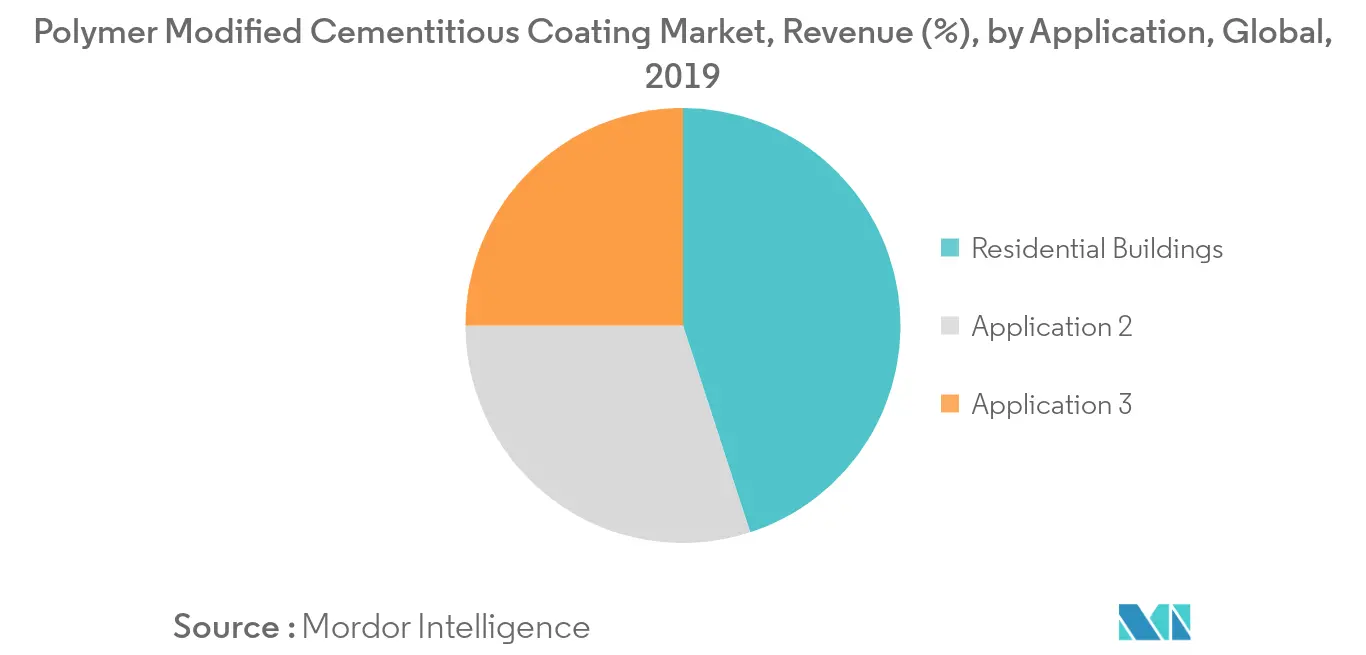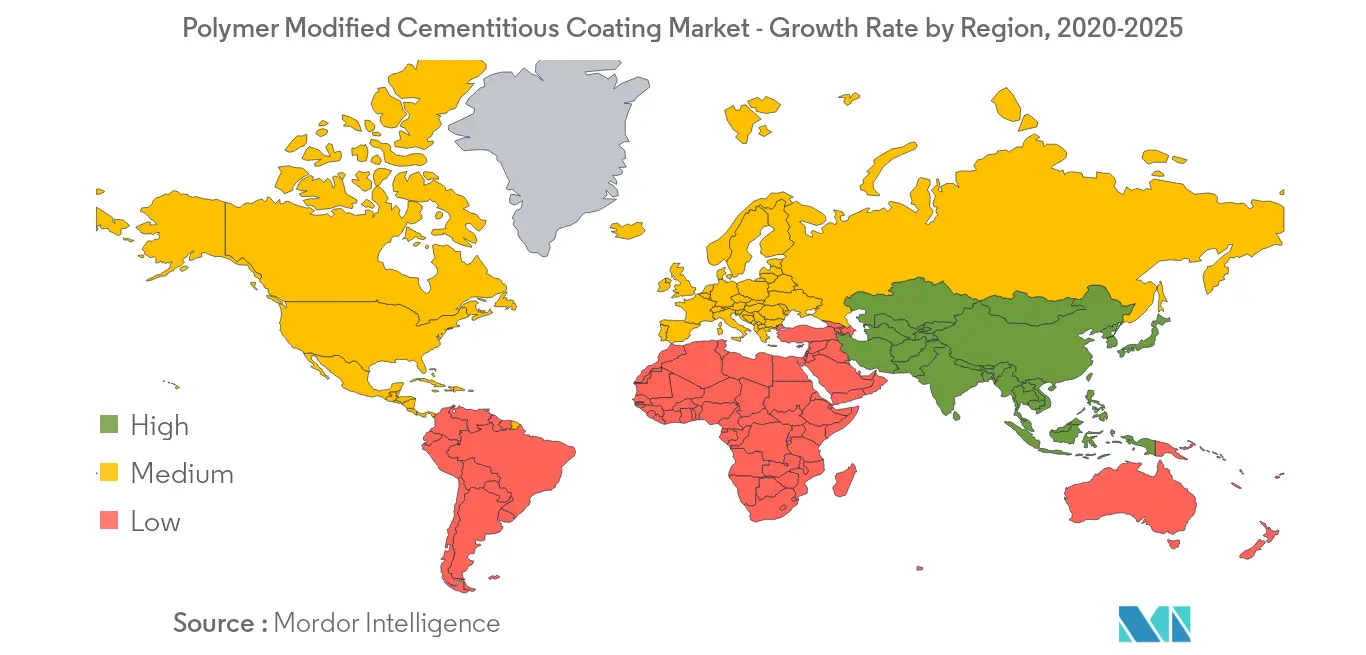Market Trends of Polymer Modified Cementitious Coating Industry
This section covers the major market trends shaping the Polymer Modified Cementitious Coating Market according to our research experts:
Residential Buildings Largest Segment for Polymer Modified Cementitious Coating Market
- Cementitious coatings are commonly two-part mixes utilized behind the tile, over brickwork fixing, and over solid surfaces. These above and beneath grade waterproofing coatings have a great affinity to cement and stonework substrates because of their cementitious nature, and hence solid holding quality. Moreover, the polymer modifier contributes to the flexibility properties.
- It is utilized as a consistent, impenetrable covering on a level rooftop in residential buildings for both uncovered and concealed waterproofing applications basements, water holding structures, underground solid structures, pits, basins, sumps, and so on.
- It is anticipated that the revenue of new residential construction in the United States will reach up to roughly USD 585.7 billion by 2023.
- The residential housing industry for students in India is projected to reach a market value of USD 320 million in 2020 from USD 170 million in 2018.
- All the aforementioned factors are expected to drive the polymer modified cementitious coating market during the forecast period.

Asia-Pacific Region to Dominate Polymer Modified Cementitious Coating Market
- Asia-Pacific region holds a prominent share in the polymer modified cementitious coating market globally and is expected to dominate the market during the forecast timeline.
- The region has seen rapid urbanization in the last few years as the developing countries like China, India, Indonesia, etc. from the region are becoming a global hub for several businesses across the world.
- In 2020, the revenue from the smart home market segment is expected to be USD 34.56 billion and is forecasted to grow up to market value of USD 56.6 billion by 2023.
- The Asia-Pacific region dominates the buildings & construction business over the world contributing about 46% of the worldwide spending in the construction sector.
- Thus, rising demand from various industries is expected to drive the market studied in the region during the forecast timeframe.


